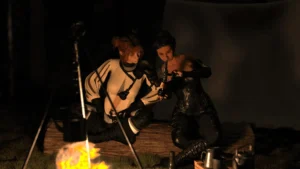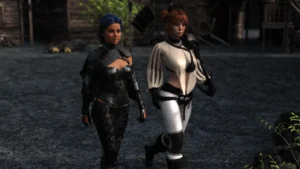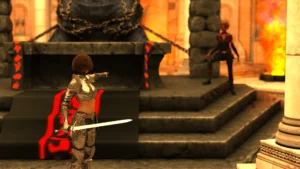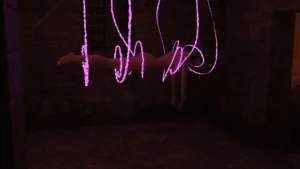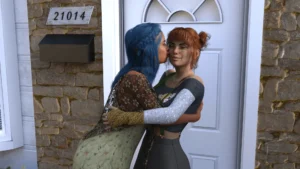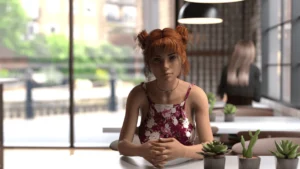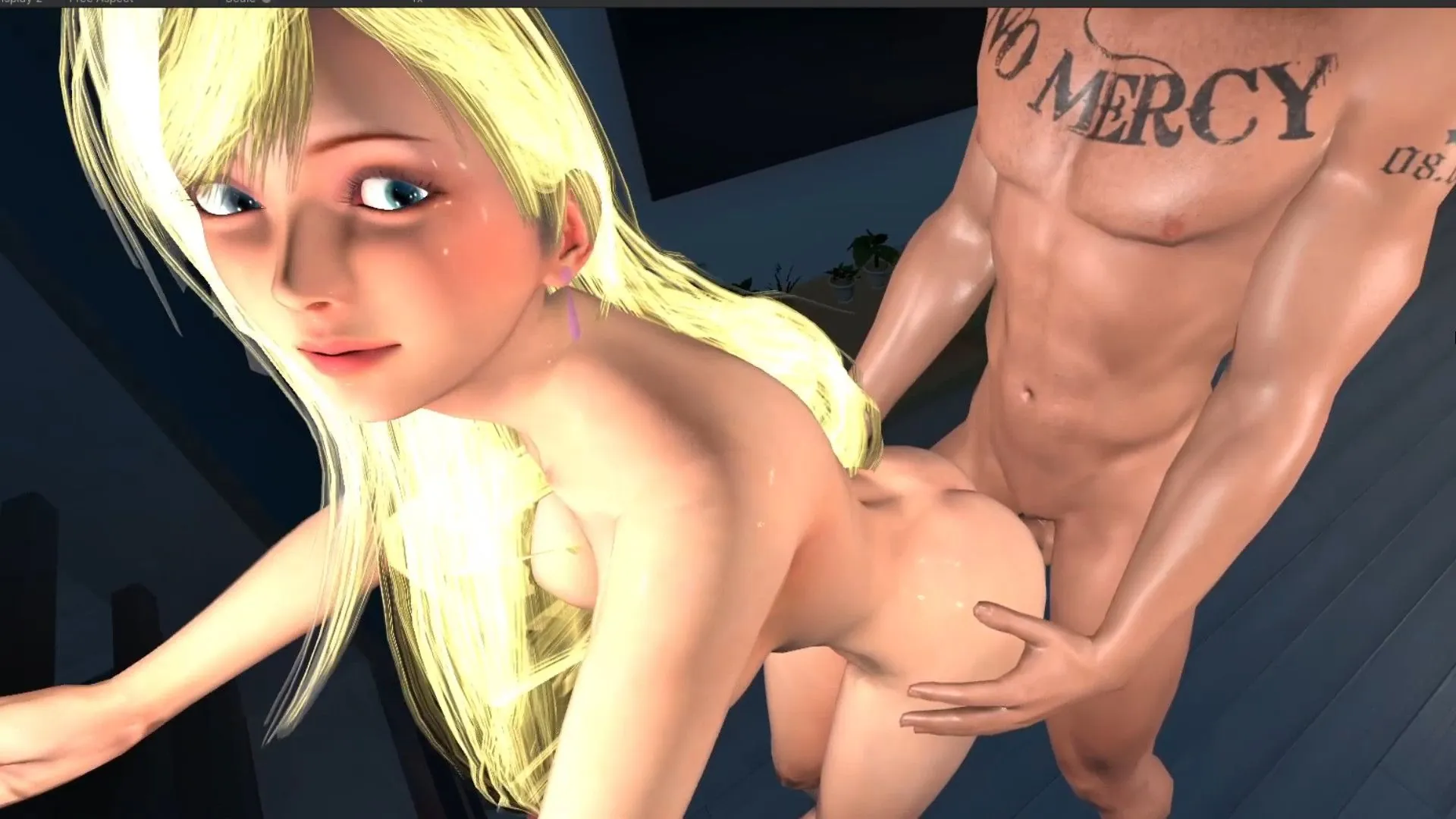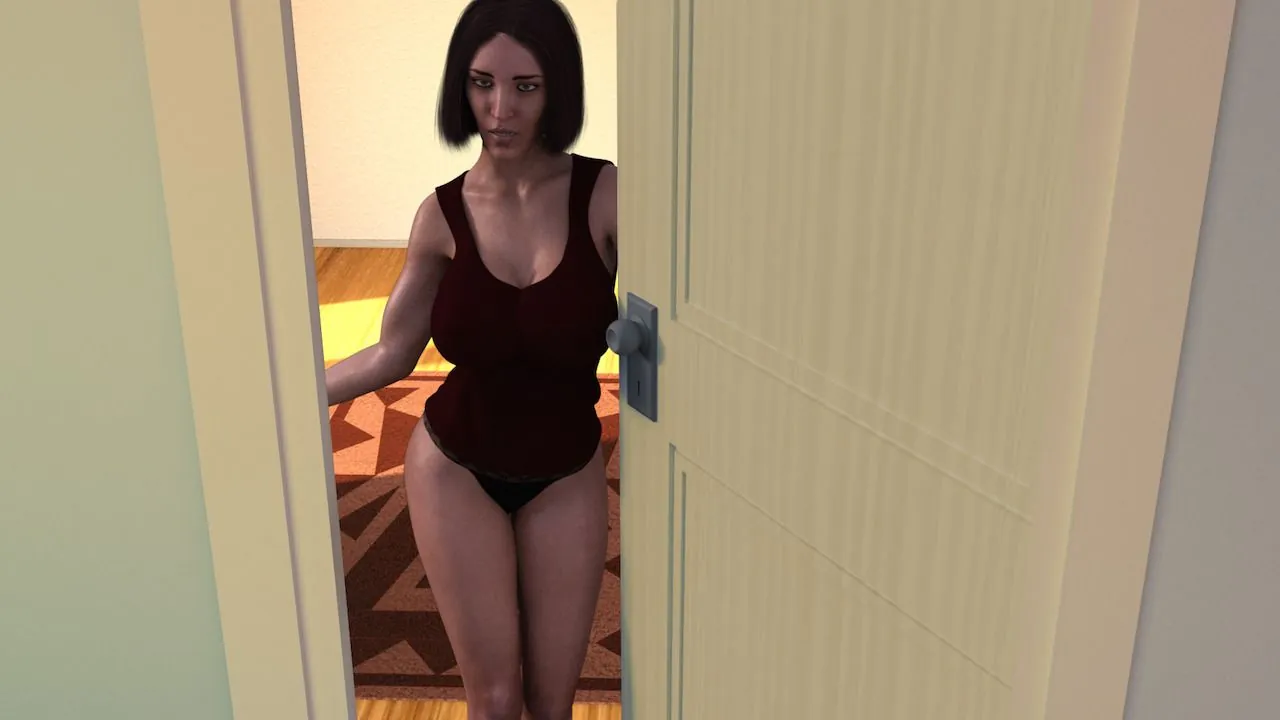
Play Between Two Worlds
Between Two Worlds review
How narrative depth and adult themes redefine interactive storytelling
Between Two Worlds challenges conventional gaming boundaries by merging tabletop RPG elements with intimate character dynamics. This adult visual novel stands out through its deliberate pacing of mature content within a multilayered narrative framework. As players navigate dual realities, they discover how emotional depth and strategic relationship-building create a truly immersive experience that transcends typical genre expectations.
Dual Reality Gameplay Mechanics
Bridging Tabletop RPG and Modern Visual Novel Elements
Picture this: You’re rolling a 20-sided die to decide whether your rogue character steals a cursed artifact 🎲✨, while simultaneously texting your in-game best friend about whether they’ll cover for your shady antics. Between Two Worlds doesn’t just blend tabletop RPG mechanics with modern visual novel storytelling—it smashes them together like a cinematic car crash you can’t look away from.
Here’s the magic sauce: Your dungeon-crawling decisions directly shape your character’s “real-world” relationships. Let’s say you betray your tabletop party to grab that shiny magic sword. Congratulations—now your in-game roommate won’t trust you to water their plants. 😬 The dual reality gameplay creates consequences that ripple across both worlds, forcing you to weigh short-term power gains against long-term emotional fallout.
Pro Tip: Treat every tabletop session like therapy. Those impulsive dice rolls? They’re basically your id screaming into the void.
I once watched a streamer spend 45 minutes agonizing over whether to reveal their character’s secret vampirism during a campfire scene. When they finally did, it unlocked an entire subplot about addiction metaphors that changed how NPCs interacted with them for the rest of the game. That’s interactive storytelling with teeth—choices don’t just open doors, they remodel the whole building.
Character Progression Systems and Relationship Dynamics
Let’s talk about leveling up your charisma IRL (well, game IRL). Between Two Worlds replaces traditional skill trees with something messier and more human: relationship-building mechanics that evolve like TikTok drama. Your “friendship stats” aren’t just numbers—they’re living ecosystems of inside jokes, grudges, and shared trauma.
🔑 Key systems:
– Trust Tokens: Earned through consistent behavior, spent to access personal storylines
– Emotional Inventory: Limited slots force you to prioritize which bonds to nurture
– Conflict Timers: Unresolved arguments escalate if ignored for too long
During my third playthrough, I learned the hard way that romancing two characters simultaneously isn’t just risky—it’s mathematically disastrous. The game tracks overlapping dialogue choices across narrative branching paths, eventually locking me out of both relationships when my lies became statistically unsustainable. It’s like getting audited by Cupid. 💘📉
| Chapter | Avg. Playtime | Interactive Scenes | Narrative Content |
|---|---|---|---|
| 1: New Beginnings | 2.1 hrs | 47% | 53% |
| 2: Crossroads | 3.4 hrs | 52% | 48% |
| 3: Fractured Bonds | 4.7 hrs | 61% | 39% |
Notice how later chapters become more reactive? That’s your past decisions coming home to roost. By Chapter 3, you’re basically playing emotional Jenga with the relationships you’ve built.
Balancing Narrative Choices with Interactive Scenes
Ever played a game where the “mature content” feels like someone slapped an R-rated sticker on a Disney script? 🚫🎬 Between Two Worlds handles mature content integration like a Michelin-star chef—every spicy scene serves the story’s flavor profile. Intimacy occurs only after specific trust thresholds, with consequences that echo through both game realities.
The genius lies in timing:
1. Build tension through shared tabletop victories/failures
2. Earn private moments via consistent character choices
3. Shatter expectations by tying physical intimacy to emotional revelations
A friend’s playthrough accidentally turned into a meditation on grief because they accessed a romantic scene too early. Instead of fireworks, they got raw dialogue about loss that permanently altered their save file’s ending. That’s narrative branching paths done right—no choice is “wrong,” but every choice matters.
🛑 Warning: This isn’t “press X to kiss.” Key romantic interactions use a dual-input system where you choose both physical actions and emotional tones separately. Get too handsy without matching vulnerability? Enjoy your awkward couch silence simulator.
The dual reality gameplay reaches peak brilliance in Chapter 5’s infamous “Mirror Realm” sequence. Tabletop battles literally reflect real-world conflicts, with enemy weaknesses matching your character’s emotional vulnerabilities. Defeating a lava golem by admitting your fear of abandonment? That’s not just gameplay—that’s art. 🎨⚔️
So why does this alchemy work? Because Between Two Worlds respects your intelligence. It doesn’t just ask “What would you do?”—it demands “Who will you become?” And honestly? We’re all still trying to figure that out.
Between Two Worlds demonstrates how mature themes can enhance narrative depth when integrated with purpose. Its sophisticated approach to character development through dual-world mechanics sets a new benchmark for interactive storytelling. For creators and players alike, the game offers valuable lessons in balancing creative ambition with audience engagement strategies.



